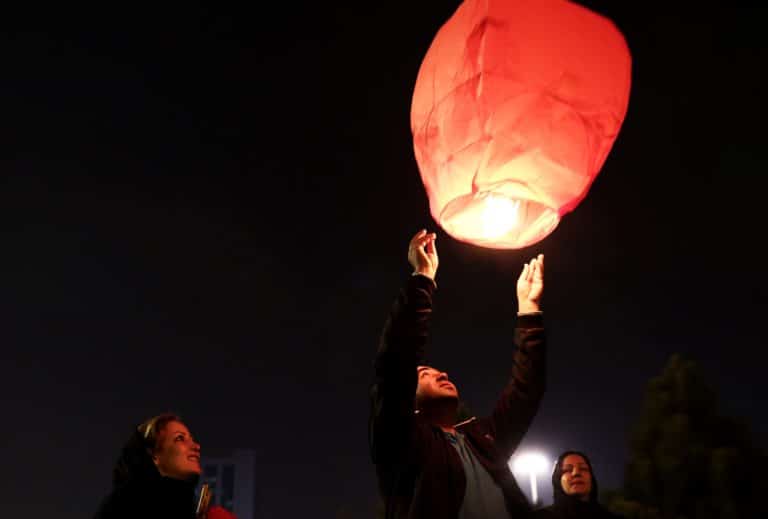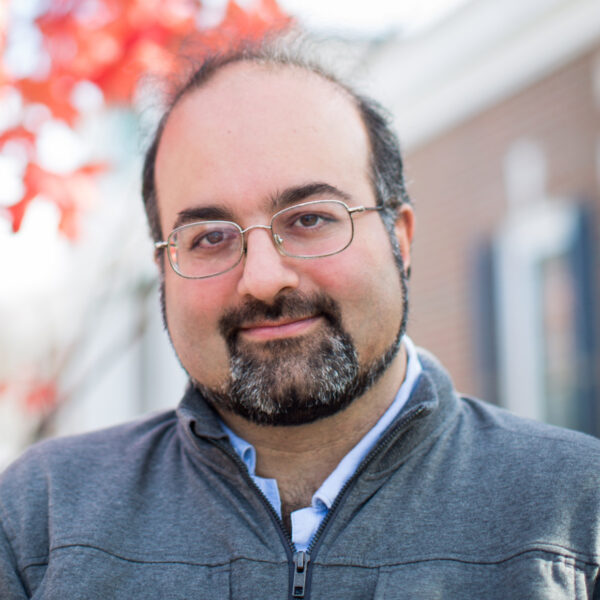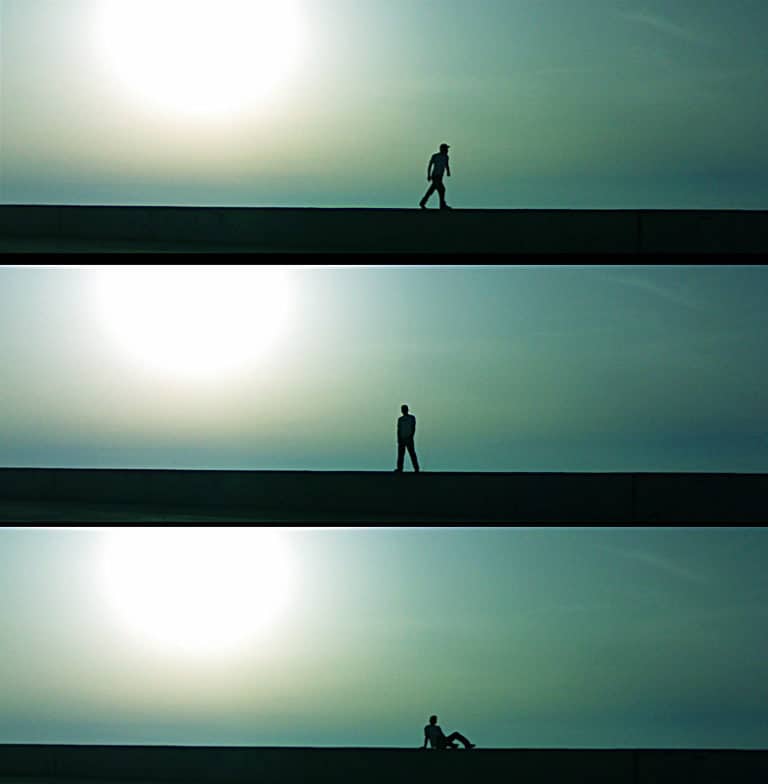
An Iranian man releases a lantern in Tehran during the Wednesday Fire feast, or Chaharshanbeh Soori, held annually on the last Wednesday evening before Nowruz. Image by Behrouz Mehri/Agence France-Presse / Getty Images..
Persian New Year at the White House
“Ms. Michelle Obama requests the pleasure of your company at a reception in honor of Nowruz to be held at the White House.”
I read the email, which began with the above sentence, over and over again. Ms. Michelle Obama.… Nowruz… White House.
My first response was to say, incredulously, “Sure…” and to look for the link to wire money to a Nigerian bank. In other words, I took it for the typical spam. But I checked the email account and, sure enough, it came from the White House. So I called a friend of mine who is much more of an “insider” type and said, “Does this look legit?” And he said, “Dude, you’re being invited to the White House.”
So… Nowruz.
Nowruz is the first day of spring. It marks the beginning of the Persian new year. It is an ancient ceremony, with roots that go back around 3,000 years. It marks the spring equinox. So many religious holidays, including Easter, probably have a connection to the symbolism of the rejuvenation of life, of nature, of the arrival of spring.
Nowruz is the most Persian of the Persian holidays: a celebration of life, family, spring, resilience, and poetry. It is celebrated almost everywhere that Persianate culture — much broader than the modern country of Iran — has touched. So Afghans, Central Asians, some Turks, Kurds, etc. all celebrate the “New Day” (Nowruz, Nou-rooz) holiday.
The origin of the holiday dates back 3,000 years and contained a great deal of merry celebration. It was wrapped up in the Zoroastrian tradition, the ancient religion of Iran before the arrival of Islam. Somewhere in time the tradition began to take on elements of placing seven items on a table with each item beginning (in Persian) with the letter “S”: seeb (apple), serkeh (vinegar), sabzeh (greens), samanou (a slightly bitter dessert), and so on. The table is called “haft-Seen,” meaning the “seven items that start with S.”
Nowruz is ultimate about the victory of light over darkness. Nowruz is ultimately about the arrival of spring, the breathing of life back into the dead of the winter. Nowruz is based on seeing an intimate connection between our own hearts and nature; as nature comes to life, so do our own hearts. As Iranians pray during the time of Nowruz, we pray to God to:
O God
You who are the transformer of hearts
Change our hearts
into the loveliest of forms.
So…. going to the White House.
I’ll be honest. It’s not every day that one gets invited to the White House or a similar office. I had been invited to the State Department once before, for the holy month of Ramadan. At that time (2003), I declined it because of the war that we had just waged against Iraq. I was opposed to the war, opposed to the death and destruction we had unleashed on that country, and I didn’t want to be used as a photo op honoring Muslims at the same time that this particular community was suffering. So I turned it down.
Ten years later, in the summer of 2013, I was involved in a project to actually boycott the Ramadan celebration at the White House and State Department. I got asked again in 2014 to go to the State Department, to advise them on how to confront ISIS. I accepted the offer. I was open, honest, and critical. I mentioned how our policies were not working. We were in bed with the sponsors of the same Wahhabi ideology that is at the heart of ISIS. We were also creating a domestic ambience that led to the alienation of many Muslim youth. I was adamant that if we were serious about not having American Muslim youth being attracted to ISIS’ recruiting strategies, we would have to create a more open and inviting American public discourse — ironically, one that would mean American citizens (including Muslims) being more free to critique our own government.
This time around, the invitation from the White House came at the time of an epic showdown between the Obama administration (which cautiously is pursuing a nuclear power deal with Iran) and the blockage of 47 Congressman (led by Tom Cotton of Arkansas) who have taken the unprecedented step of signaling a refusal to honor foreign policy decisions the White House would reach. The signing of the agreement with Iran would mean alleviating the crippling sanctions on Iran, which has caused so much suffering in that country. Given a choice between the policy of the White House and the obstinacy of the 47 Republicans, I made a choice to stand on the side of alleviating suffering.
I am not for the White House. I am not against the White House. We are called to stand for justice, and for alleviating the suffering of humanity — no matter what their background.
If we can alleviate suffering of human beings in Guantanamo and in Afghanistan and in Pakistan by boycotting the White House, we should seek that path. And if we can alleviate suffering of human beings in Iran by showing up in the White House, we should seek that path. Alleviating suffering, and bringing mercy into the broken spaces in our human community, is our prime directive.
I am also guided by the example of the Civil Rights Movement. Dr. King and other leaders engaged in both boycott (Montgomery) and engagement with the White House depending on the occasion. We live in an age where we have to recognize that our means of engagement have to be connected to our ideals, while also refusing to become dogmatic about those means.
What I was totally unprepared for is how much this invitation meant to the Iranian community. I told a couple of friends, who told a couple of friends. Before long I was getting hundreds of touching emails from many Iranian and Iranian-American people — most of whom I have never met — writing in tears about how proud they were not just of me, but of us. They talked about how meaningful it is to them that our traditions are honored and celebrated at the White House. It was pride at being recognized, honored, acknowledged.
When you’re used to being demonized, this kind of inclusion matters. When I decided to go to the White House, it was with a recognition that I don’t just go on behalf of myself and my family, but truly to give voice to a community of people who desire to be heard, seen, and acknowledged.
We were asked to gather at the East entrance of the White House. We went through two rounds of security to get inside. It was a diverse audience — mainly Iranians, but not all. Also represented were Turks, Afghans, Pakistanis, Kurds, Central Asians, and others. It was a diverse audience of community leaders, business leaders, a few academics, government workers, entertainment industry, and artists.
As a person who tends to see himself as mainly “speaking truth to power,” it was refreshing and (I have to admit) slightly surprisingly to see that the mood of the room was far from being a “sell out” or acquiescing in face of power. The people that I spoke with understood what was at stake, that this was political theater — well-intentioned political theater, but theater nonetheless. They understood that in a stand off between President Obama and the Republicans on the issue of Iran, the one option the Iranian community did not have was that of being non-committal and missing from the conversation.
We went through the White House, and yes, even the most hardened political critics turned into a bit of a tourist. We all “borrowed” a few napkins with the Presidential Seal.
Mostly what I was impressed by was the creativity, vitality, artistic talent, entrepreneurial vision, political courage, and leadership of the human beings gathered there. I have seen the same qualities in many who organize outside the centers of power, and it was refreshing to see it among many inside the corridors of power. Government work is a curious theater, and I maintain some skepticism about the efficaciousness of that work, particularly in the context of U.S. foreign policy. But what was hard to miss was the seriousness, the political wisdom, and the earnestness of the people who were gathered there, wishing the best for Iran and Iranian people.
The First Lady, Michelle Obama, made her entrance around 1 pm. I have to confess being slightly star struck by her. Devastating, elegant, charming, and charismatic, she won the room over as soon as she greeted everyone in Persian with “Nowrouzetan mobarak!” (May your Nowruz be blessed!”) The room erupted into a joyous celebration. She knows, as well as her husband does, how to work a room:
She identified the White House as “the people’s house,” a place that honors the diversity of America.
“And I think it’s so fitting that we’re holding this celebration here today because one of my favorite things about the White House is how it is truly the People’s House — a house that reflects the diversity of culture and traditions that make us who we are as a country. And Nowruz is one of those traditions.
For more than 3,000 years, families and communities in the Middle East, Asia, and all around the world, including here in the United States, have celebrated this holiday to mark the renewal of the earth in springtime — and we’re finally feeling spring! Yay for that!”
Last week I wrote a blog post here about how all of us are on the bridge to Selma, that America is a non-linear march towards inclusion. I fundamentally believe that time is morally neutral, and that things only get better when people of good will struggle and push for justice. Standing a few days after Selma’s celebration in the White House and listening to the First Lady praise the diversity of America, which includes the celebration of Nowruz, was a reminder of how lovely America can be. I am struck again and again of the promise of America — even in the face of injustice. I heard the voice of Langston Hughes:
O, yes,
I say it plain,
America never was America to me,
And yet I swear this oath—
America will be!
The First Lady went on to identify the symbolism of the Nowruz as follows:
“And just like in many of your homes, we have created our own White House Haft-Seen. As you all know, Haft-Seen essentially means ‘Seven S’s,’ and each ‘S’ represents a different hope for the New Year — a hope for blessings like patience and love and sweetness. For example, we’ve got grass sprouts that represent rebirth and renewal of nature. We’ve got an apple for health and beauty. We have crushed berry spice that represents the sunrise and the spice of life. And after a long winter, we can use a little bit of all of that, right? Finally thawing out. You’re ready for summer, aren’t you?”
I found myself lingering on the words of the First Lady, thinking about the long winter of discontent between Iran and the United States — two countries that have so much in common, two countries whose people so yearn to be united and yet whose governments have been antagonistic towards one another. Yes, all of us await the metaphorical sunrise, the spice of life, and finally thawing out. We await the thawing out of hostility and the rise of a new day, a new year, a new relationship.
We await the arrival of spring of togetherness, of nations actually getting to know one another. I await the day where Iranians and Americans can travel freely to each other’s countries, getting to know one another on a human to human basis. I look for the day where my children and million of other children can travel to their ancestral homeland, getting in touch with their own roots. After decades of “winter,” that “spring” would indeed be a holiday to celebrate for all of us.
Before leaving the White House, I found myself all alone in the East Room, the large reception room where the White house Haft-Sin table had been set up, and where the First Lady had spoken to us. It was a room grand, serene, and oozing with power. In the last few minutes before leaving, my thoughts turned to power and the relationship it has with justice.
I have seen many, particularly in Washington DC, spend their whole lives lusting after power: political power, financial power, influence power. And I have seen among many who speak truth to power a persistent suspicion of power, a critique of power, even an assertion that “absolute power corrupts absolutely…. All great men are evil.”
Standing in the East Room, it was a different relationship with power that came to me, one rooted in the prophetic tradition. It was a more measured assessment of power, one that came out of the depth of the civil rights tradition.
Power has two faces. Linked to love, power implements justice. Power devoid of love for all brings destruction. Both faces are real, and both manifest themselves in this world. May we insist that power always, everywhere mingle with justice, rolling down like waters.
“Power without love is reckless and abusive,
and love without power is sentimental and anemic.
Power at its best is love implementing the demands of justice, and justice at its best is power correcting everything that stands against love.”
As we move on from the winter of political tension to what we hope is a new day, a new year, a new era of “spring,” reconciliation, togetherness, may we see love and power mingling together, and justice rolling down like waters.
Nowruz-etan mobarak, friends.
May your New Year be blessed.


Share your reflection